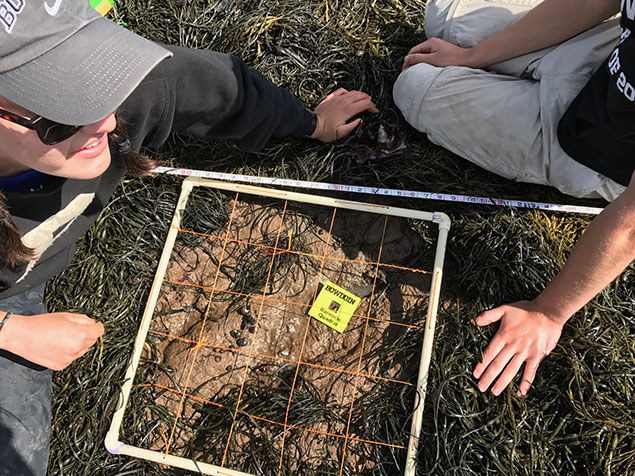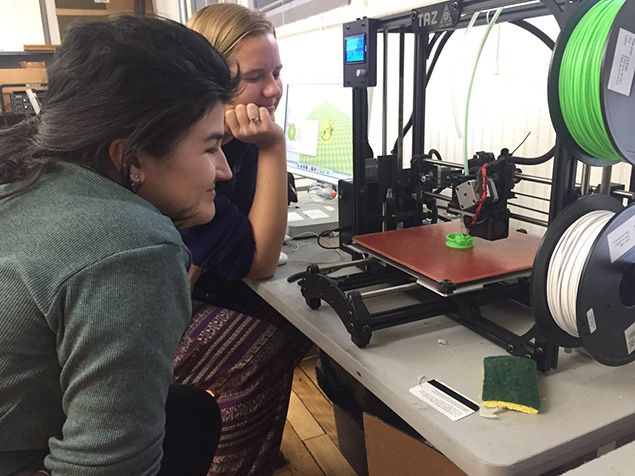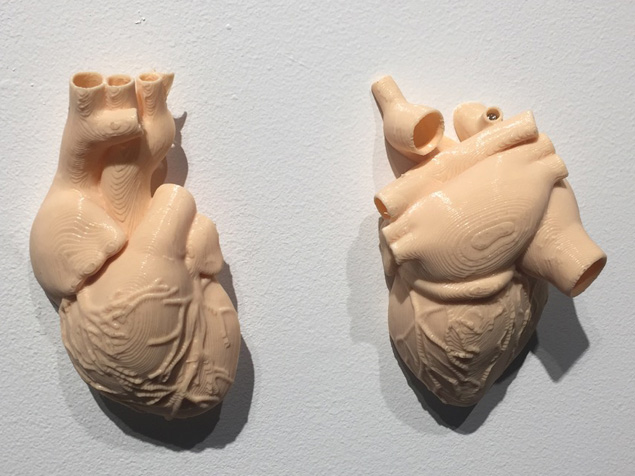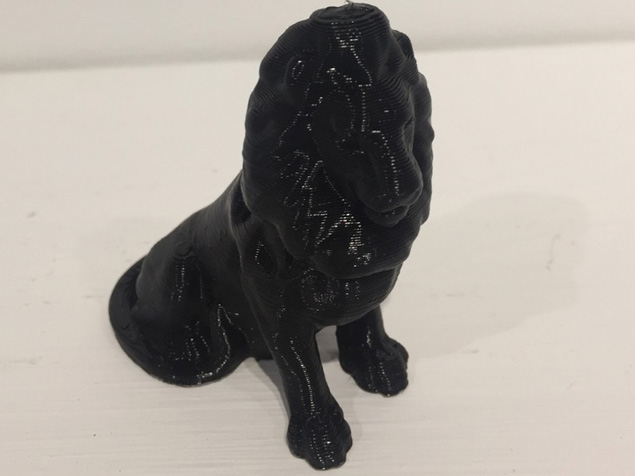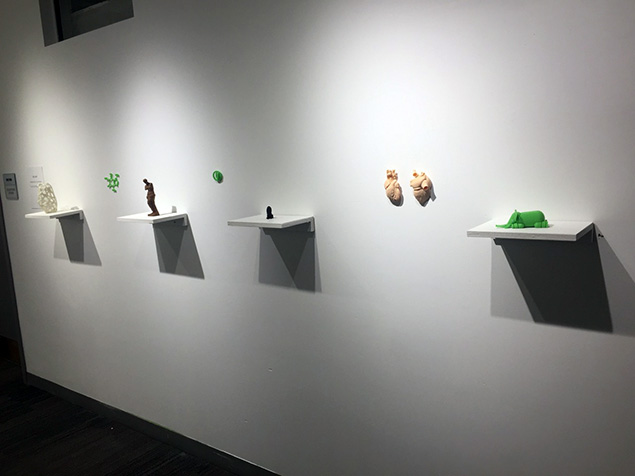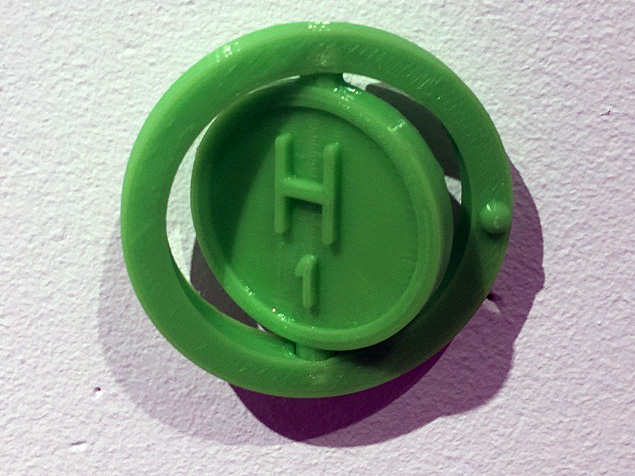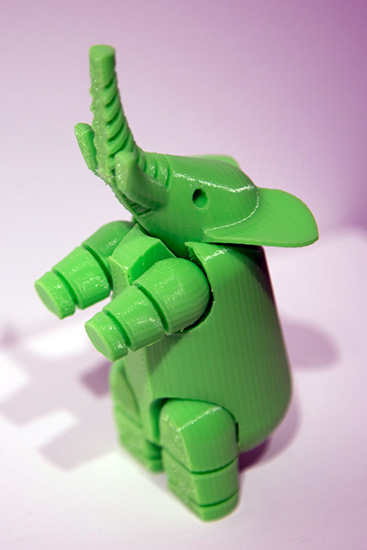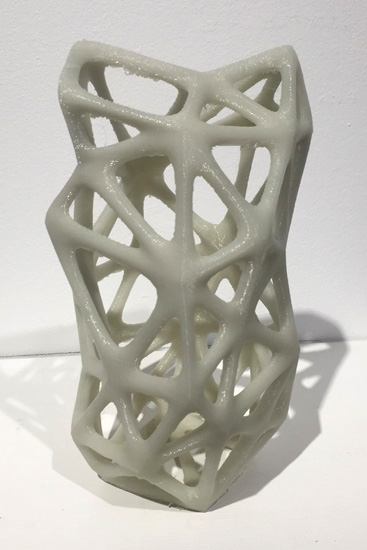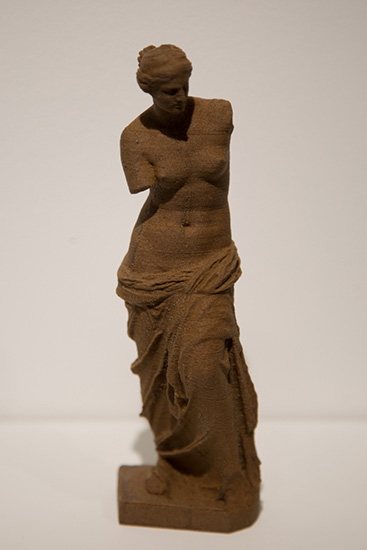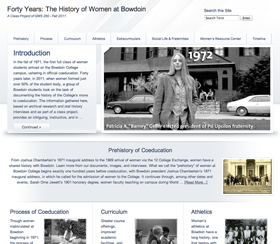Project Showcase
Assyrian Relief Project
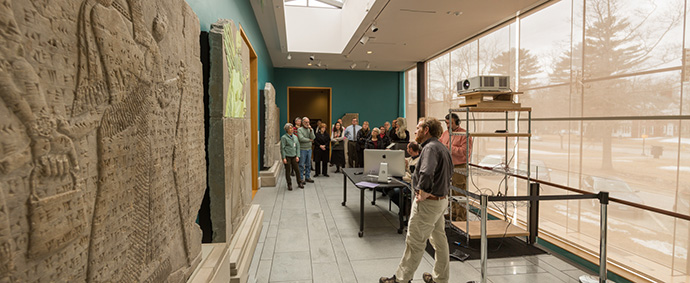
The stone reliefs, which are around 3000 years old, were once decorated with colored pigments, long since lost through the ages. Professor Jim Higginbotham (Associate Professor of Classics on the Henry Johnson Professorship Fund, Associate Curator for the Ancient Collection in the Museum of Art, and Associate Dean for Academic Affairs, Classics) worked with Paul Benham to reconstruct the original coloration of the reliefs using historical records and scientific analysis of pigment remnants to guide the color choices. Once a color palette had been agreed upon a high powered projector was positioned in front of the relief of Apkallu (the Winged Spirit) which projected colored light onto the surface of the stone mimicking the original pigments. Using the MadMapper projection mapping software each element of the relief was carefully picked out and given the appropriate color. The end result was an exhibit that was convincing enough to fool many visitors into thinking that the Assyrian relief had been painted.
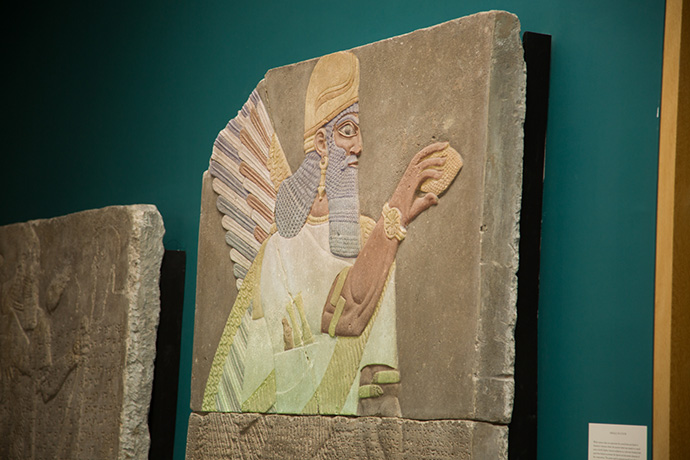
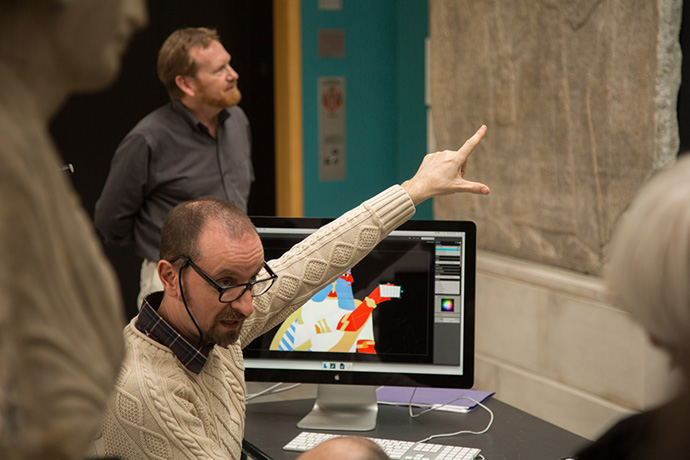
Table Top Gaming Project
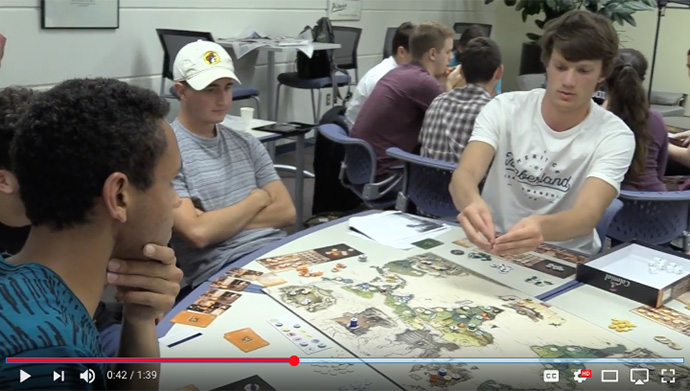
In the fall of 2017, a new, innovative course is investigating that question. In Historical Simulations (HIST 2624), sixteen upper-level students are examining American history, from the era of exploration through the Civil War, through the medium of tabletop games. Modern board games have come a long way from the days of Monopoly and Risk, explained Professor of History Patrick Rael, a lifelong gamer who also devised the course. Students also recorded “confessionals” in front of a green screen throughout each game outlining their strategies and progress in the game.
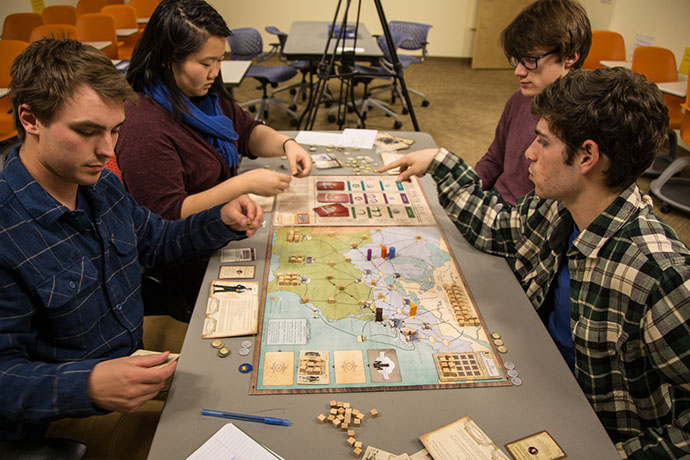
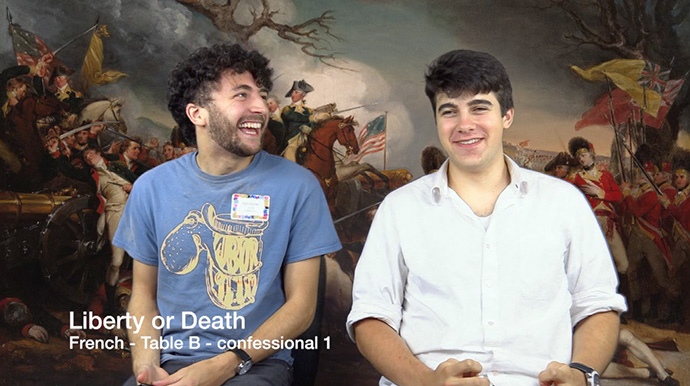
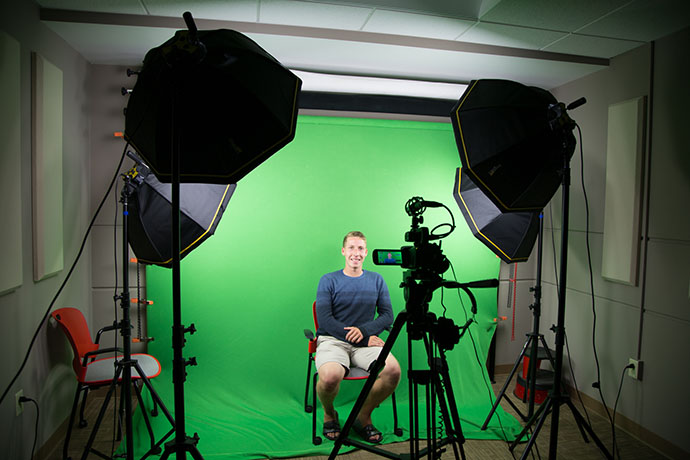
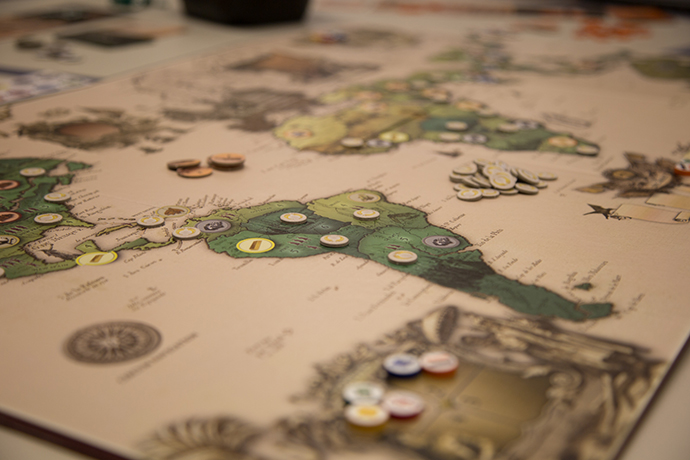
Augmented Reality Sandbox
In the library lobby, students stand transfixed by the sandbox. As they smooth, spread, and pile up sand, an infrared light above them senses their movements and responds to the changing landscape they're creating.
The tool is Bowdoin's new augmented sandbox, which mesmerizes as it demonstrates hydrological and geological concepts, such as how water moves through land, both during floods and in droughts.
"One of the aims of this device is to help people visualize topography, watersheds, and catchment areas — what they look like in three dimensions," explained Paul Benham, an academic technology consultant at Bowdoin.
With help from Bowdoin's physics machine shop, Benham created the augmented reality sandbox and set it up in the library this semester. Its permanent home will be in Druckenmiller Hall, where students studying earth and oceanographic science can use it to augment their studies.
Weather Station
Stephen Houser and Dj Merrill worked with Vladimir Douhovnikoff to install and maintain a remote sensing station at the former transmitter site of the Naval Air Station Brunswick (NASB). The remote station includes sensors that measure wind speed and direction, temperature, relative humidity, rain fall, solar radiation, and photosynthetically active radiation (PAR). PAR is the spectral range of solar radiation (400 to 700 nanometers) used in the process of photosynthesis [wikipedia]. It indicates the amount of useful radiation available to plants in the area. The entire station is powered by a solar panel that charges an internal battery, requiring minimal maintenance and consistent, reliable data collection. The data collected from the station are intended to be used for instruction and continuing environmental research.
Another collection station is planned to be installed at a nearby stream. This second station will collect similar temperature and relative humidity data as well as the stream depth as an indicator of available water in the area.
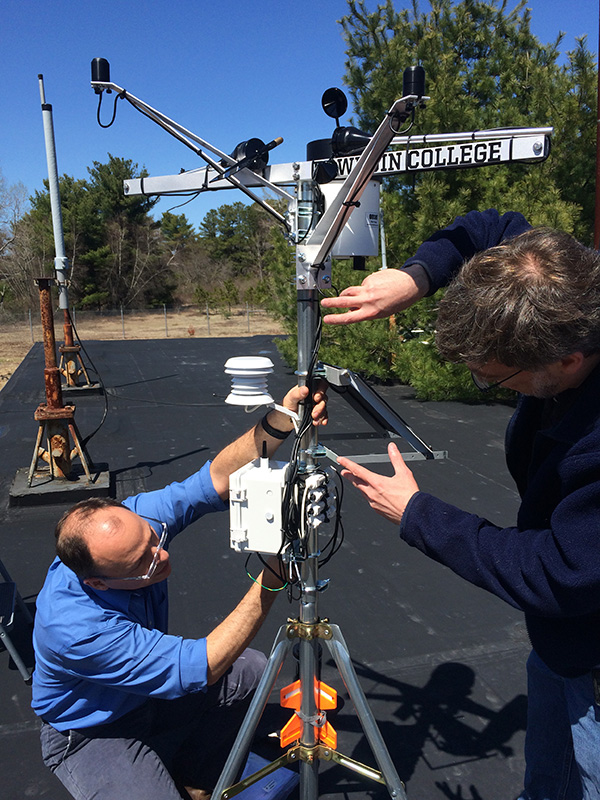
Drone Photography
Whether you wish to photograph the installation of a weather station on a nearby rooftop, survey trees for a Biology lab, see what buildings on campus or your research look like from above, or work with your filmmaking class, we have the expertise to help you.
The Academic Technology Group at Bowdoin has been photographing and filming with "drones" (Unmanned Aerial Vehicles) for a number of years.
We are actively working to ensure that all of our activities are safe and effective for educational purposes. We have been collaborating with other higher education institutions to keep on top of trends and regulations for the benefit of our faculty and students.
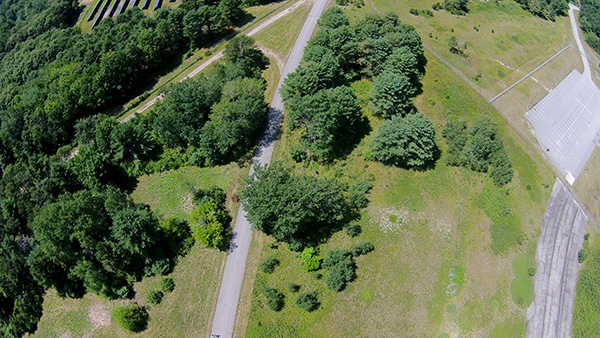
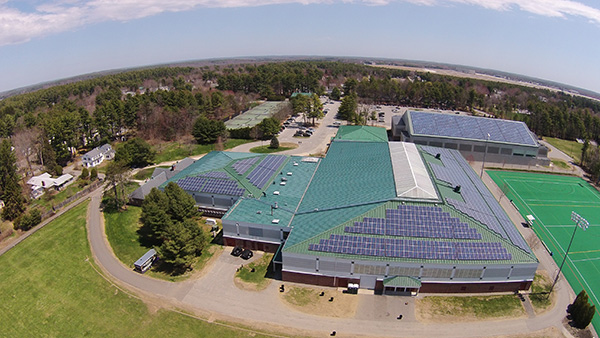
Mapping
Mapping Eighteenth Century London
Ann Kibbie’s English 2305 course, Fall 2014
Jennifer Snow worked with Ann and her students in English 2305 (Eighteenth Century London) to introduce and use mapping tools to understand the concept of place in 18th century London. Students identified places (churches, taverns, parks, etc.) in their readings and created maps highlighting those places in James Boswell’s The London Journal and Daniel Defoe’s Moll Flanders. The students used TileMill and Mapbox to create their literary maps.
Patrick Rael (ongoing)
Jennifer Snow has collaborated with Patrick and many of his students to help advance his Historical Atlas project. The project seeks to map historical events by plotting historic census data in ArcGIS, and is both course and research-related. Students in Patrick’s courses (History of African Americans to 1865 and African American History 1865 to the Present) learn about various historical events and then integrate historic census data and voting records with county boundary maps (1790-present). After posing a question related to a historical event, students are able to compare census data and visualize trends that answer their questions, sometimes in unexpected ways. I introduce the students to ArcGIS and support them as they complete their maps.
Pamela Fletcher (ongoing)
The London Gallery Project is a research repository and visualization of the history of the commercial art gallery in London, c. 1850-1914. The project is based at Bowdoin College, under the direction of Professor Pamela Fletcher. The research and technological application are an on-going process.
Wordpress for the Classroom
Sicily: Mediterranean Pasts, Presents, and Futures
In the spring 2016 semester, two Bowdoin faculty members, Davida Gavioli (Italian) and Barbara Weiden Boyd (Classics), offered upper-level courses focusing of various aspects of Sicilian history and culture. Gavioli’s course, Italian 3008 (Of Gods, Leopards, and ‘Picciotti’: Literary Representations of Sicily Between Reality and Metaphor) was organized around literary texts written by Sicilian writers and/or located in the Sicilian landscape, drawn from 20th and 21st century authors; central themes of the course included issues of cultural identity long a part of Sicilian discourse (e.g., is Sicily “truly” Italian? is Sicily really part of Europe, or should it be considered fundamentally Other? etc.) as well as major contemporary social and political issues (the economy; the Mafia; immigration and asylum; etc.). Boyd’s course, Latin 33 (Sicily in the Roman Imagination), was organized around the literary texts commemorating the appropriation of Sicily first by the Greeks and subsequently by the Romans between the 5th and 1st centuries BC. Students read several significant ancient texts in Latin concerning Rome’s occupation and colonization of Sicily, supplemented by readings in English drawn from the many Greek poets and historians who were active in ancient Sicily.
We helped them by setting up a "photo blog" that enabled students (and professors) to post directly from smartphones and tables while on the trip and then to edit text when they returned home. The result is a glorious group of images and descriptive text.
Course Websites Using Wordpress
Provide an alternative to Blackboard for faculty and students who wish to use a more visual content management platform (WordPress) for their students to use in class, or for them to use to disseminate information to the students.
Ken Dennison - Physics 1140 lab manual - Fall 2015
Moved an HTML based web site over to Wordpress for the Physics 1140 Lab. The website was used as a replacement for a paper copy of the lab manual using a set of iPads that were loaned out for the semester. Visit site:
Wordpress for Academic Research
Dante Today – Citings & Sightings of Dante’s Works in Contemporary Culture
This experimental website, inspired by students of Arielle Saiber’s “Dante’s Divine Comedy” course, has been built to archive occurrences of Dante and his works in popular and contemporary culture of the twentieth century and beyond. The site catalogs a wide range of Dante “sightings”: from the cursory to the extensive, and from a place of superficial knowledge of Dante and his works to deep familiarity with them. We leave to the readers the opportunity to judge the nature of each citing, and note the frequency of certain themes over others. The goals are twofold: 1) to provide a central access point for said references; and 2) to offer data that students and scholars of Dante can use to think about the Nachleben (“afterlife”) of Dante’s works in relation to reception theory, resonance, and cultural studies.
Site: Dante Today – Citings & Sightings of Dante’s Works in Contemporary Culture
Forty Years: The History of Women at Bowdoin: Wordpress for Academic Research
Forty Years: The History of Women at Bowdoin - A Class Project of GWS 280 - Professor Jennifer Scanlon
In the fall of 1971, the first full class of women students arrived on the Bowdoin College campus, ushering in official coeducation. Forty years later, in 2011, when women formed just over 50% of the student body, a group of Bowdoin students took on the task of documenting the history of the College’s move to coeducation.
The information gathered here, based on archival research and oral history interviews and as part of a class project, provides an intriguing, instructive, and in hindsight often humorous glimpse of Bowdoin College before, during, and after coeducation.
The site includes a timeline as well as documents, photos, and audio and video recollections related to six additional themes: the process of coeducation, the curriculum, extracurricular activities, social life and fraternities, athletics, and the Women’s Resource Center.
Please explore the site and learn about the motivations of college officials who pushed for coeducation; the first female athletes and their struggles for uniforms and for competitors; the challenges of being the first women in spaces as distinct as classrooms, fraternity houses, and student government; the responses of male students to as massive a change as coeducation; and the observations of faculty, male and female, who watched the process unfold. Celebrate and commemorate forty years of women at Bowdoin by sharing in the vital documents and living memories on display here.
3-D Printing & Modeling
Working with academic departments to create and print 3D objects to enhance teaching and scholarship.
Currently working with Earth and Oceanographic Studies to develop custom, adjustable mounts for students to use smartphones to take photographs on microscopes of various sizes.
Worked with Computer Science Department to print 3D renderings of Jackson Pollock painting gestures that have been algorithmically formulated
Modeling 3D representations of campus buildings.
_____________________________________________________________________
Collaborated with Elizabeth Halliday Walker from Earth and Oceanographic Science to create a simple "Barnacle Quadrat", including a weighted version for when they are submerged during use.
In collaboration with the Northeastern Coastal Stations Alliance (NeCSA), the students of the Bowdoin Marine Science Semester have been conducting intertidal surveys at three sites in the Gulf of Maine –at the Schiller Coastal Studies Center in Harpswell, on Hurricane Island in Penobscot Bay, and at Bowdoin’s scientific research station at Kent Island in the Bay of Fundy. Every year at each site, we survey all the algae and animals within half meter square “quadrats” that run along permanent transects through the intertidal. Because barnacles can be so abundant, we subsample within the quadrat with a 2cm-square “mini-quadrat.” Redesigning and 3-D printing new “mini-quadrats” has improved our efficiency for our barnacle counts. Over time, the data we gather will help us understand the dynamics of intertidal communities, and the long-term data set will help us understand climate change in the Gulf of Maine.
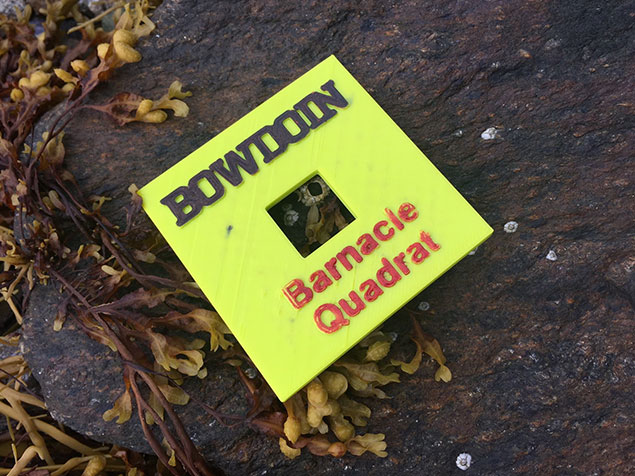
This article does a nice job explaining general goals
